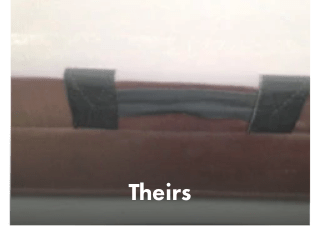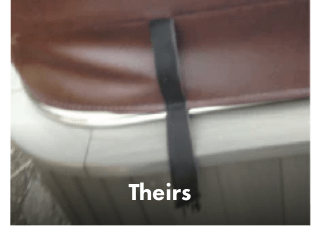The Ultimate Guide to Choosing the Perfect Hot Tub Cover & Accessories
A hot tub is more than just a backyard luxury — it’s a place where you unwind after long days, share conversations with loved ones, and escape from everyday stress. Like any cherished investment, it deserves care and protection. One of the most important parts of that protection is a reliable, well-designed hot tub cover. Without it, your spa is exposed to the elements, prone to heat loss, and more costly to maintain.
At myspacover, we’ve seen countless hot tub owners underestimate the role a good cover plays. It’s not just a lid you throw on top; it’s an essential piece of spa equipment that affects everything from energy efficiency to safety. This guide will walk you through why a cover matters, how to choose the right one, and what accessories can make your spa life easier and more enjoyable.
Why a Hot Tub Cover is More Than Just a Lid
Imagine running your hot tub without a cover. Every degree of heat you lose has to be reheated, driving your electricity bill higher. Every gust of wind carries dust, pollen, and leaves into the water. Without a barrier, sunlight can break down the chemical balance faster, forcing you to spend more on maintenance products. And perhaps most importantly, without a sturdy cover, there’s nothing preventing children, pets, or even wildlife from getting into the water when unattended.
A quality hot tub cover solves all these problems in one simple step. It locks in heat, blocks debris, protects water chemistry, and adds a layer of safety. Over time, the money saved on electricity and maintenance more than pays for the investment in a good cover. In colder climates, the savings can be even more dramatic, as insulated covers prevent heat from escaping during long winter nights.
Understanding the Types of Hot Tub Covers and Upgrades
Not all hot tub covers are created equal. While a basic cover may seem fine at first, premium upgrades can greatly improve its performance and lifespan.
One essential upgrade for people in windy locations is the Heavy-Duty Wind Strap. This isn’t just a standard tie-down; it’s designed to keep your cover secure even during strong gusts or storms. Without it, wind can lift the cover slightly, letting heat escape and putting strain on the seams. Over time, this can warp the foam or tear the vinyl. Wind straps keep the fit snug and prevent these problems before they start.
Another feature worth considering is the Double-Wrapped Core. Inside every hot tub cover is a foam core, and around that foam is a vapor barrier that keeps moisture from seeping in. Over time, water naturally finds its way through, especially in humid spa environments. Once the foam absorbs water, it becomes heavier and loses its insulating ability. A double wrap means there are two layers of moisture protection, drastically slowing the process and extending the life of the cover.
Then there’s the Heat Seal, a clever but often overlooked detail. Most covers fold in half, and where the two halves meet, there’s a small gap. Even with a good fit, heat can escape through this seam. A heat seal closes that gap, preventing warmth from slipping out. This is especially important in areas where winter temperatures dip below freezing, as even small losses add up over time.
Finally, we can’t forget about aesthetics. Hot tub covers are large, visible parts of your backyard space, and color choice matters. Whether you want the rich warmth of Walnut, the neutral elegance of Tan, or another shade that complements your surroundings, picking the right tone helps your spa feel like a natural part of your outdoor décor.
Choosing the Right Cover for Your Spa
Buying a hot tub cover isn’t just about picking something that looks nice. Fit is everything. A poorly fitted cover lets heat and debris in, defeating its purpose. Start by measuring the length, width, and corner radius of your spa. If it’s a unique shape or size, a custom cover ensures the perfect fit.
The next factor is insulation. The thickness of the foam determines how well the cover traps heat. In mild climates, a standard thickness may be fine, but in cold or snowy regions, a thicker foam layer keeps the water at the perfect soaking temperature with less energy. This can mean the difference between running your hot tub year-round and shutting it down in the winter.
Vapor barrier quality is another consideration. As mentioned, a Double-Wrapped Core can save you from having to replace your cover early. And for those who face heavy rains or storms, Heavy-Duty Wind Straps are essential.
Finally, think about your local climate. In hurricane-prone regions, you’ll want extra securing features. In snowy areas, stronger foam and better insulation are a must. A cover isn’t just about protection — it’s about matching your spa’s needs to your environment.
Essential Accessories to Make Spa Life Easier
A cover on its own works well, but certain accessories can make a big difference in how easy it is to use and maintain.
For example, a Cover Lifter is a game-changer. Hot tub covers can be heavy, especially in larger spas. A lifter lets you slide the cover on and off effortlessly, meaning you’ll use your hot tub more often because it’s not a hassle to uncover it.
A Cover Conditioner is another must-have. Over time, sun exposure can fade and crack vinyl. A good conditioner adds UV protection and keeps the vinyl supple, preventing early wear and tear.
Don’t overlook Replacement Straps and Clips. These small components keep your cover securely fastened when not in use, especially important for safety and heat retention.
Caring for Your Hot Tub Cover
Even the best cover needs regular care to last its full lifespan. Once a month, give it a quick clean with mild soap and water, avoiding harsh chemicals that could damage the vinyl. Every few months, apply a UV protectant or conditioner to maintain flexibility and prevent cracking.
It’s also a good idea to air out your cover occasionally. Simply open it and let it sit uncovered for an hour to allow any trapped moisture to escape. This prevents mold and mildew from developing inside. And always check for small tears or seam issues — catching them early means quick, inexpensive repairs instead of full replacements.
Our Quality
It is easy for a website to claim they have the best quality but at MySpaCover we guarantee it. We utilize only the highest quality materials and the most sophisticated processes to offer the best covers available online. Here is how our covers compare to the competition:
MYSPACOVER

Our heavy-duty handles come standard and are double stitched using marine grade vinyl to ensure the highest durability and most attractive aesthetics.

Our standard straps are double stitched and are also produced with marine-grade vinyl.

We double stitch every seam and hinge to ensure your spa cover can be used for years to come.
Other Guys

Their cheap handles are more prone to wear and tear and are known to rip off within the first two years plus the appearance speaks for itself.

Our competition uses low-quality straps that are prone to breakage and often times do not match the color of the spa cover.

Their use of single stitching and exposed shells can ultimately cause cracking and heat loss, costing you more on your electric bill.
The Underside
The underside of a spa cover is often overlooked. However, this is the material that is in constant contact with high temperatures and the chemicals in your spa. The life of your spa cover depends on a high-quality spa underside. We don’t cut corners like the other guys so you can trust that our 6 mil plastic wrap is vapor sealed to the core and will keep the heat out.
MySpaCover utilizes an 11oz PVC coated poly that, after years of rigorous testing, has proven to be the best possible material to withstand constant high temperates and chemical exposure.
Beware of mesh bottoms used by competitors as this type of material is meant to cut costs and is prone to failure.
We’ve found a few great alternatives to your selected spa cover that can reach you even quicker!
Here are the closest available alternatives based on your preferences.